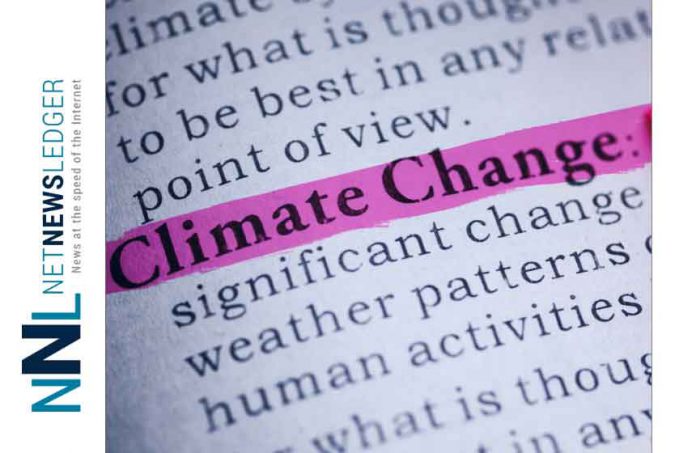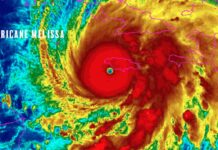
Both the intensity and duration of extreme weather will worsen further in the northern hemisphere as temperatures rise, scientists warn
By Megan Rowling
BARCELONA (Thomson Reuters Foundation) – Countries in the northern hemisphere can expect longer summer heatwaves, as well as more consecutive days of heavy rain with harmful consequences if internationally agreed goals to limit global warming are exceeded, scientists warned on Monday.
A study published in the journal Nature Climate Change said more hotter-than-average days would cluster together if the world warms by 2 degrees Celsius (3.6F) above pre-industrial times, lengthening the duration of future hot spells.
Global temperatures have risen by about 1C already and are on track for an increase of at least 3C if states cut climate-changing emissions in line with the plans they have made so far.
“Our study found that if the world warms to 2C above pre-industrial levels, we could see a significant shift in summer weather conditions from the patterns we know today,” said lead author Peter Pfleiderer of research group Climate Analytics and Humboldt University.
“Extreme weather would become more persistent – hot and dry periods, as well as consecutive days of heavy rain, would all get longer.”
As heatwaves and drought become more drawn out, the damage they cause to health, ecosystems, agriculture and the economy grows “significantly”, the scientists said, while multiple days of heavy rain hike the risk of severe flooding.
In 2018, several spells of hot and dry weather, each lasting weeks, contributed to wheat losses of 15% in Germany, they noted.
And in the United States, the past 12 months have been the wettest on record, with central regions experiencing weeks of near-continuous rainfall, inundating swathes of farmland.
The researchers found that if temperatures rise 2C, the chance of hot spells lasting longer than two weeks increases by 4% compared with today across the northern mid-latitudes, which include much of Europe, North America, and Central and North Asia.
The probability of at least seven consecutive days of heavy rain would be 26% higher in that same zone.
Co-author Carl-Friedrich Schleussner said the study showed that limiting warming to 1.5C – the lower limit governments agreed to strive for in the 2015 Paris climate accord – would reduce those impacts “considerably”, highlighting the need for “urgent action” to cut planet-warming emissions further.
U.N. Secretary-General Antonio Guterres recently sounded the alarm over new data showing that July 2019 was the warmest month on record. He urged leaders to come to a September summit he will host with concrete offers to strengthen climate action.
Cities have sweltered through record-breaking heatwaves this summer in Europe, with several countries – from Britain to Germany and France – setting new temperature highs.
The Netherlands said it had recorded nearly 400 additional deaths due to the extreme heat, which is particularly dangerous for elderly people, infants and those with pre-existing medical conditions, such as cardiovascular disease and diabetes.
CITY PLANNING
Roop Singh of the Red Cross Red Crescent Climate Centre said there was a “huge research gap” on the levels at which high temperatures start to affect health in local contexts, especially in the developing world.
“Unless we understand how extreme heat impacts people, it is harder to start planning for it and to convince people (to act),” she told a briefing on heatwaves and cities last week.
Last month, the Red Cross launched a guide to help fast-expanding cities warn residents more effectively when extreme heat is forecast and minimize harm to public health.
It urges cities to devise a heat action plan and take steps such as opening public buildings as “cool shelters”, setting up phone helplines and visiting vulnerable people at home.
Cities are advised to incorporate heat risks into their long-term urban plans, plant more trees to provide shade, paint building roofs in light colours to better reflect the heat, and designate car-free zones, among other measures.
The Global Heat Health Information Network (GHHIN), which brings together organizations working on the problem, said that at the national level only about a quarter of countries have action plans in place to limit the impact of heat on health.
Kate Strachan, a climate change officer with the African arm of ICLEI, an organization that works with local governments on sustainability, said the majority of cities in her region lacked formal heat plans.
But some, like Cape Town, were making smaller changes like adding water fountains, sprinklers and more trees, she noted.
In the future, heat risks should be incorporated into national plans to adapt to climate change, she added, and cities needed new approaches for slum areas, which have so far been neglected and lack the resources to deal with rising heat.
Hunter Jones of the GHHIN said climate scientists expected heatwaves not just to become hotter with global warming, but also to last longer and come closer together, as well as happening earlier and later in the season than now.
“All of these things are considerations, and they are beginning to cause more problems as we’re increasing the intensity and duration of these heatwaves,” he warned.
(Reporting by Megan Rowling @meganrowling; editing by Laurie Goering. Credit the Thomson Reuters Foundation)






